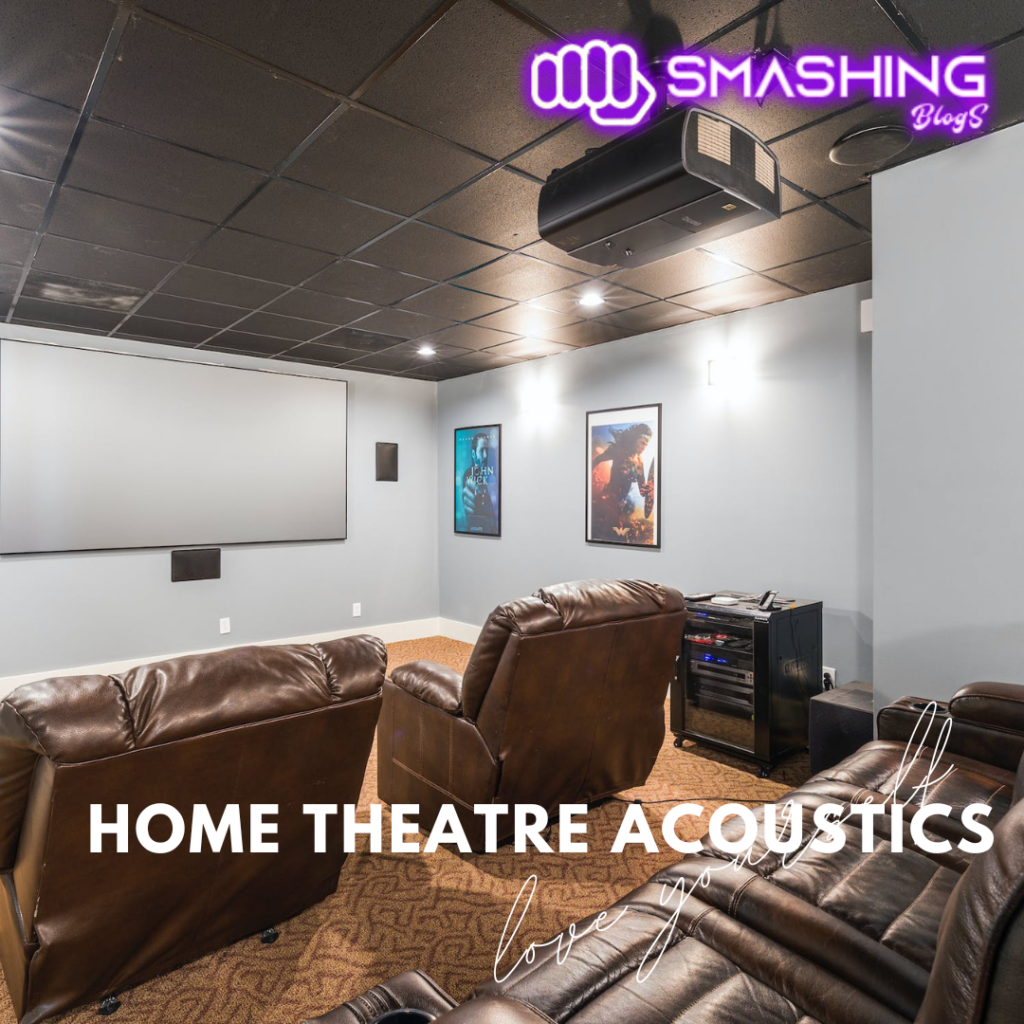Imagine settling into your home theatre, ready to enjoy a blockbuster movie or a thrilling sports event. You’ve invested in high-quality audio and visual equipment, and the room is beautifully designed. But as soon as the film begins, you realize something is awry.. The sound is muddled, the dialogues are hard to understand, and the experience doesn’t match your expectations. This scenario highlights the significance of acoustic treatment in home theatres.
Acoustic treatment plays a pivotal role in achieving the ultimate home theatre experience. It involves the use of materials and design principles to optimize sound quality within a space, ensuring that you hear audio as it was intended by filmmakers and sound engineers. In this comprehensive exploration, we will delve into why acoustic treatment is crucial for home theatres, its benefits, and how to implement it effectively.
Understanding the Acoustic Challenge
Before delving into the importance of acoustic treatment, it’s essential to comprehend the acoustic challenges that home theatres often face.
- Reverberation and Echo: Sound reflections from walls, ceilings, and floors can create undesirable echoes and reverberations, degrading sound clarity.
- Sound Localization: Inaccurate sound localization can make it challenging to discern where specific sounds or voices are coming from, affecting the immersive experience.
- Sound Isolation: Adequate sound isolation prevents sound leakage into or from other rooms, ensuring that you don’t disturb others and aren’t disturbed during your viewing.
- Frequency Response: Proper acoustic treatment addresses uneven frequency responses, ensuring that bass, midrange, and treble are balanced and natural.
- Background Noise: External noise from appliances, HVAC systems, or street traffic can disrupt the audio experience.
Now, let’s explore why addressing these challenges through acoustic treatment is paramount in home theatres.
1. Clarity and Dialogues

In home theatres, understanding dialogue is crucial for following the storyline in movies and TV shows. Acoustic treatment helps in minimizing sound reflections, which can otherwise distort dialogues. When reflections are reduced, the spoken words become clearer, allowing you to fully engage with the narrative.
2. Immersive Experience
The hallmark of a great home theatre is its ability to immerse you in the content you’re watching. Proper acoustic treatment creates an environment where sound surrounds you, enveloping you in the action. It replicates the cinematic experience, making you feel like you’re in the middle of the movie or game.
3. Enhanced Sound Quality
Acoustic treatment optimizes sound quality, ensuring that you hear audio as intended by the creators. This translates into hearing the nuances of a film’s score, the impact of a punch in an action sequence, or the subtleties of a musical performance.
4. Accurate Sound Localization
With well-implemented acoustic treatment, you can pinpoint the exact location of sounds in the room. This is crucial for games, action movies, and any content where spatial awareness matters.
5. Reduced Disturbance
Effective sound isolation, achieved through acoustic treatment, keeps sound from escaping your home theatre and prevents external noises from intruding. This is especially important if your home theatre is located in a shared or noisy environment.
6. Optimal Bass Response
Acoustic treatment helps in taming the acoustics of your space, ensuring that bass frequencies aren’t overpowering or lacking. This balance is vital for a full, immersive audio experience.
8. Improved Aesthetics
Acoustic treatments don’t just serve an acoustic purpose; they can also enhance the visual aesthetics of your home theatre. Acoustic panels, diffusers, and bass traps can be designed to complement your room’s décor, creating a more polished and cohesive look.
The Components of Acoustic Treatment
To achieve the above-mentioned benefits, acoustic treatment typically involves the following components:
1. Absorption Panels: These panels are designed to absorb sound energy, reducing sound reflections. They are particularly effective for controlling mid and high-frequency sound waves.
2. Diffusers: Diffusers scatter sound reflections in various directions, preventing them from creating echoes or standing waves. They are useful for creating a sense of spaciousness in the room.
3. Bass Traps: Low-frequency sound waves are often the trickiest to manage. Bass traps are designed to absorb or diffuse these frequencies, ensuring that bass is even and not overwhelming.
4. Sound Isolation: Soundproofing materials, including mass-loaded vinyl, acoustic sealants, and insulation, help in sound isolation, preventing noise leakage and intrusion.
5. Reflective Surfaces: While absorption is crucial, some reflective surfaces can be strategically placed to create controlled sound reflections, enhancing the listening experience.
What Acoustic Treatment to Use in Your Home Theater
Acoustic treatment should be customized to the specifics of your environment and your preferences. There are some steps to take into account when putting acoustic treatment in place in your home theater:
- Assessment: Begin with a thorough assessment of your room’s acoustics. Consider its size, shape, materials, and existing sound issues.
- Goals: Define your goals. Are you aiming for better dialogue clarity, enhanced bass response, or improved overall sound quality?
- Strategic Placement: Identify the optimal locations for absorption panels, diffusers, and bass traps. Placing them strategically can significantly impact sound quality.

